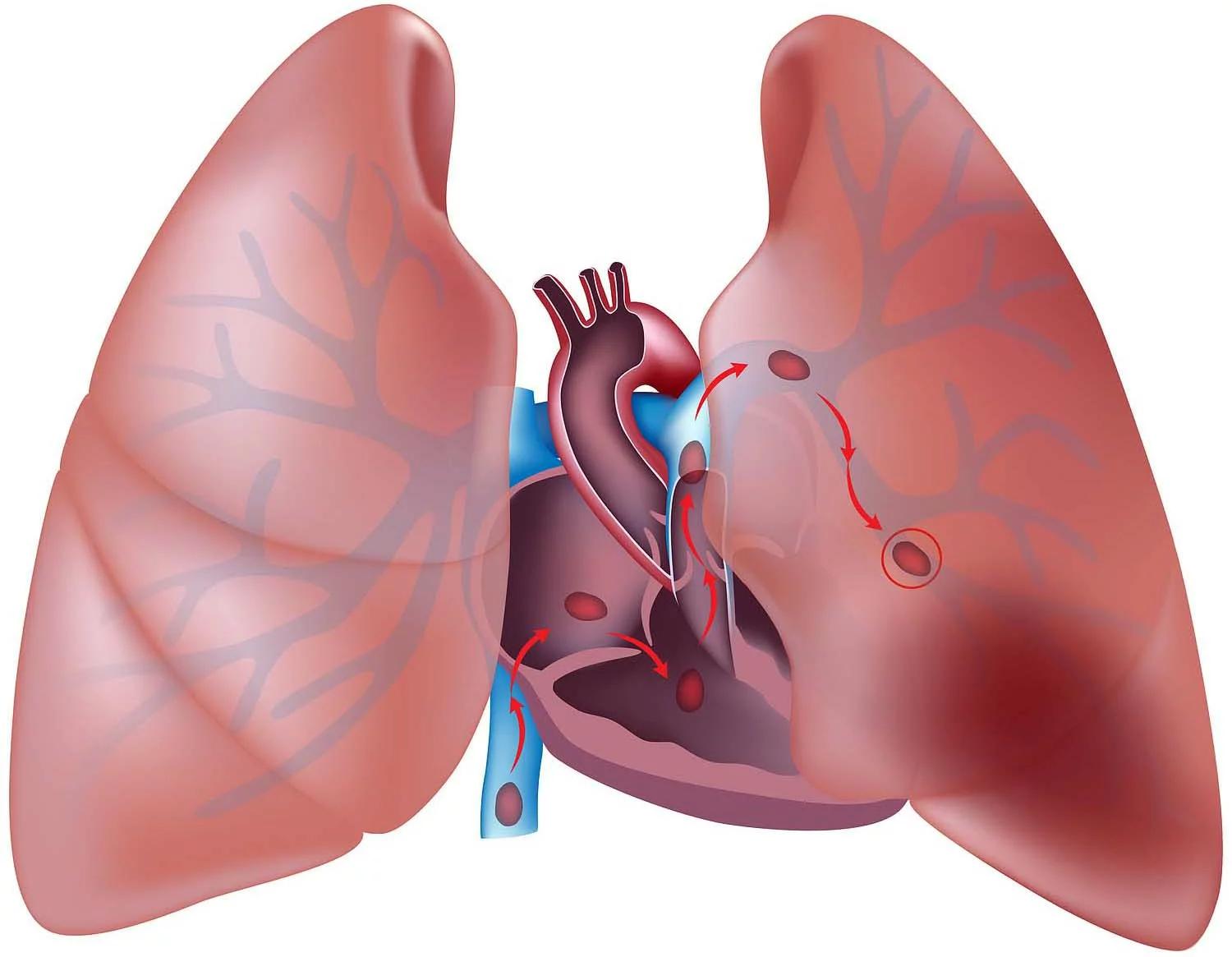Thromboembolic disease is a cardiovascular disease which affects the blood vessels. It refers to a blood clot (thrombus) that forms in a blood vessel.

What is thromboembolic disease?
Thromboembolism is used to refer to when a blood clot (thrombus) forms in a blood vessel, breaks loose, and travels to another part of the body via the blood stream where it blocks another blood vessel. When an unattached mass (embolus) causes the blockage, it is called an embolism.
Thromboembolic diseases can affect multiple organs, eventually causing the organ to shut down, leading to death.
There are two main types of thromboembolic disorders which categorized by the affected blood vessels.
- Venous thromboembolism – the resulting blood clot blocks a vein. Venous thromboembolisms most commonly occur in the legs. When this happens, it is called a deep vein thromboembolism. Thromboembolism that happens in the lungs are potentially life threatening. Called pulmonary embolism, it can be fatal depending on the exact location and degree of blockage. Less common locations for venous thromboembolism are the arms, liver, kidneys, and brain.
- Arterial thromboembolism – the resulting blood blot blocks an artery, causing an ischemia (restriction of blood flow and oxygen) and possibly an infarction (tissue death due to lack of blood supply). Most arterial embolisms happen because of a blood clot. Arterial thromboembolisms usually happen in the legs and feet although they may also occur in the brain. When it does, this is called a stroke, and may lead to a heart attack (myocardial infarction). Other possible locations are the kidneys, intestines, and eyes.
What are the causes of a thromboembolic disease?
While venous thromboembolism and arterial thromboembolism share may risk factors, there are key differences between them.
- Venous thromboembolism can be caused by:
- Family history of venous thromboembolism
- Obesity
- Older age
- Chronic illnesses such as heart disease, lung disease, inflammatory bowel disease, and cancer
- An injury to a vein (due to trauma or major surgery)
- Use of a central venous catheter
- Wearing a cast
- Bed confinement
- Sitting for a long time, particularly with crossed legs, such as on a long flight
- Estrogen-based treatments (including birth control pills)
- Arterial thromboembolism is strongly connected to the same risks associated with heart disease:
- Obesity
- Older age
- Sedentary lifestyle
- High blood pressure
- High cholesterol
- Cigarette smoking
- Diabetes
- Recent surgery
- Previous stroke of cardiovascular disease
- Mitral stenosis (a type of heart valve disease)
- Atrial fibrillation (the rapid, irregular rhythm of the heart atrial valves)
What are the symptoms of a thromboembolic disease?
The signs and symptoms of a thromboembolic disorder will vary depending on the type and location of the blockage, and its extent.
Venous thromboembolism
The most common forms of venous thromboembolism can be recognized by the following:
- Deep vein thrombosis (DVT) – throbbing, cramps, swelling, warmth, pain, hardened veins, and redness or darkened skin in one leg
- Pulmonary embolism (PE) – Sudden shortness of breath, rapid breathing, chest pain, coughing up blood, and blueish discoloration of the lips or fingers (cyanosis)
- Cerebral venous thrombosis – headaches, facial drooping, limb weakness, difficulty speaking, and seizures
- Portal vein thrombosis – upper abdominal pain, nausea, abdominal swelling, and persistent fever
- Renal vein thrombosis – lower back pain, decreased urine output, blood in urine, and swelling of the lower limbs
Arterial thromboembolism
The tell-tale sign of an arterial thromboembolism is sharp and sudden pain. Other forms of arterial thromboembolism can be recognized by the following:
- Limb infarction – limb coldness, numbness, tingling, pain, muscle weakness, muscle spasms, pale skin, and decreased pulse in the affected limb
- Heart attack – chest pains, shortness of breath, profuse sweating, weakness, lightheadedness, nausea, vomiting, and heart palpitations
- Stroke – sudden difficulty walking, speaking, and understanding, paralysis or numbness of the face, arm, or leg
What are the drugs used to treat a thromboembolic disease?
There are several different types of generic drugs for thromboembolic diseases.
Venous thromboembolism
- Anticoagulants (blood thinners) that prevent a clot from becoming larger
- Heparin
- Fondaparinux
- Warfarin
- Apixaban
- Rivaroxaban
- Thrombolytics (clot busters) are used for severe cases and stop bleeding
- Anistreplase
- Reteplase
- Streptokinase
Arterial thromboembolism
- Anticoagulants (blood thinners) that prevent a clot from becoming larger
- Heparin
- Fondaparinux
- Warfarin
- Apixaban
- Rivaroxaban
- Thrombolytics (clot busters) are used for severe cases and stop bleeding
- Anistreplase
- Reteplase